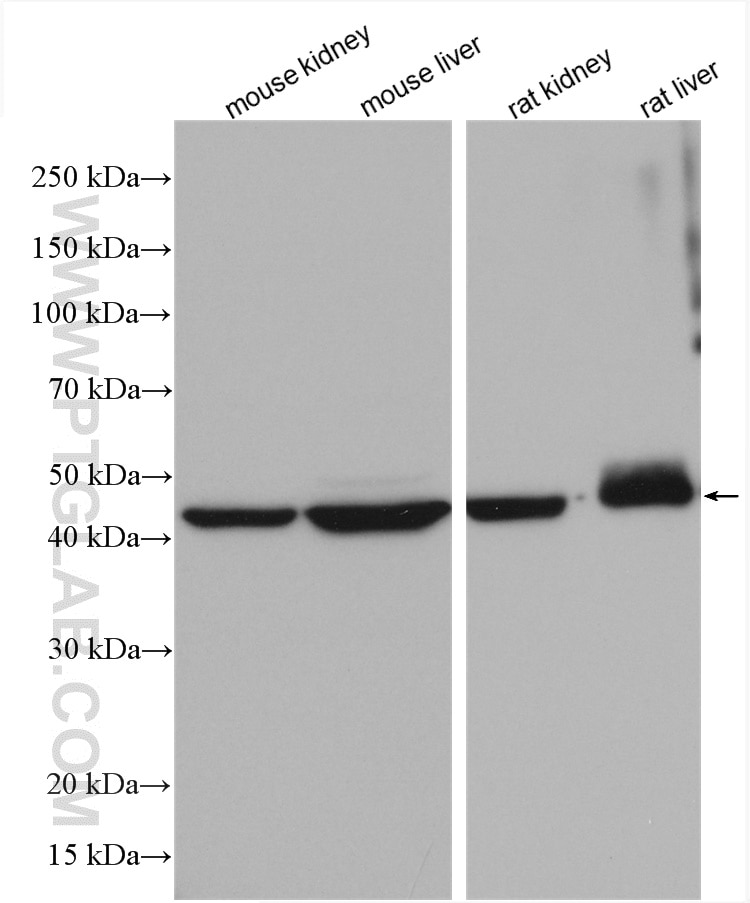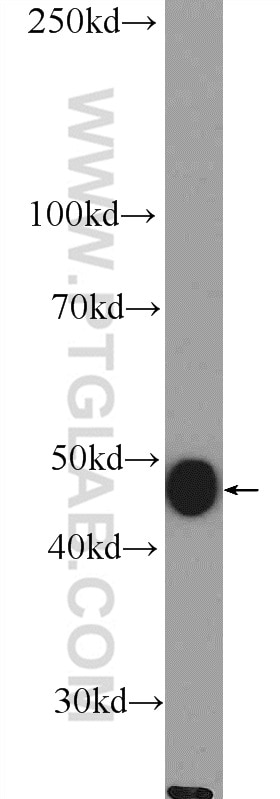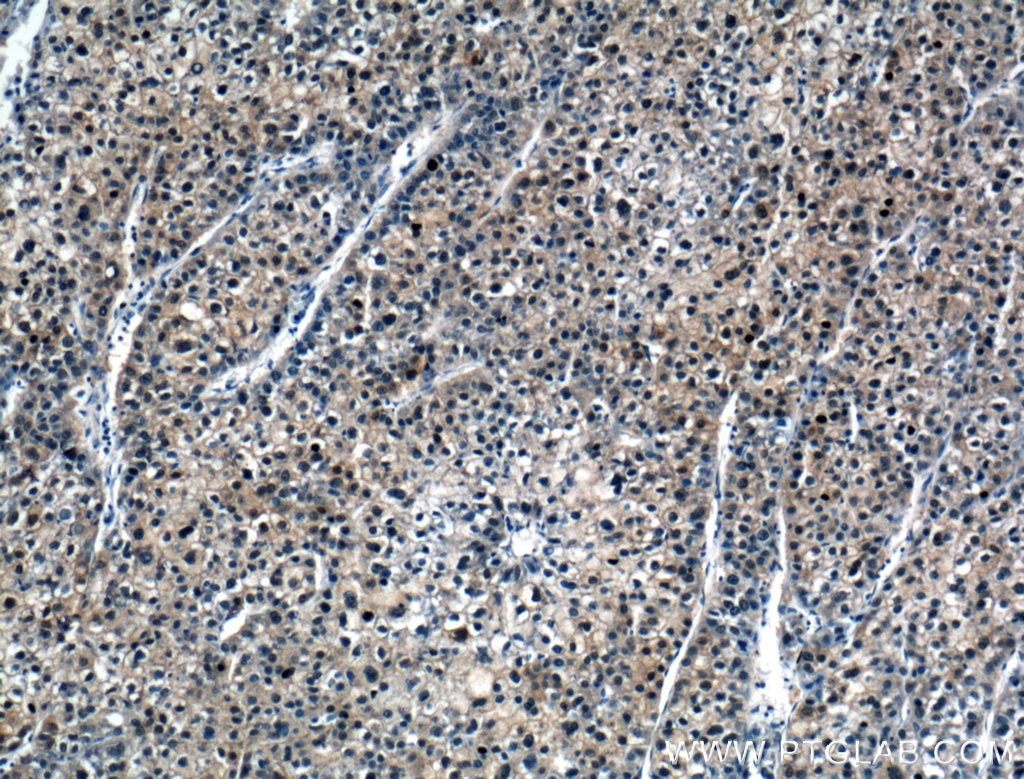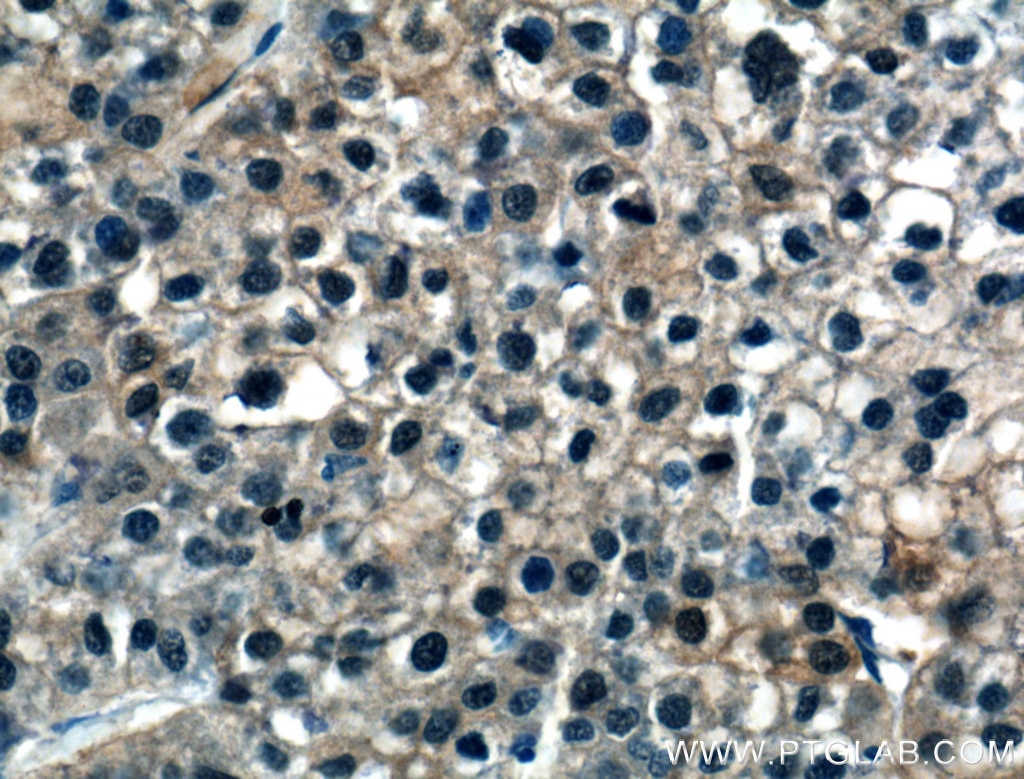Tested Applications
| Positive WB detected in | mouse kidney tissue, mouse liver tissue, rat kidney tissue, rat liver tissue |
| Positive IHC detected in | human liver cancer tissue Note: suggested antigen retrieval with TE buffer pH 9.0; (*) Alternatively, antigen retrieval may be performed with citrate buffer pH 6.0 |
Recommended dilution
| Application | Dilution |
|---|---|
| Western Blot (WB) | WB : 1:1000-1:6000 |
| Immunohistochemistry (IHC) | IHC : 1:100-1:400 |
| It is recommended that this reagent should be titrated in each testing system to obtain optimal results. | |
| Sample-dependent, Check data in validation data gallery. | |
Published Applications
| WB | See 5 publications below |
| IHC | See 1 publications below |
Product Information
16645-1-AP targets ASL in WB, IHC, ELISA applications and shows reactivity with human, mouse, rat samples.
| Tested Reactivity | human, mouse, rat |
| Cited Reactivity | human, mouse |
| Host / Isotype | Rabbit / IgG |
| Class | Polyclonal |
| Type | Antibody |
| Immunogen | ASL fusion protein Ag10007 Predict reactive species |
| Full Name | argininosuccinate lyase |
| Calculated Molecular Weight | 55 kDa |
| Observed Molecular Weight | 49 kDa |
| GenBank Accession Number | BC008195 |
| Gene Symbol | ASL |
| Gene ID (NCBI) | 435 |
| RRID | AB_2878293 |
| Conjugate | Unconjugated |
| Form | Liquid |
| Purification Method | Antigen affinity purification |
| UNIPROT ID | P04424 |
| Storage Buffer | PBS with 0.02% sodium azide and 50% glycerol , pH 7.3 |
| Storage Conditions | Store at -20°C. Stable for one year after shipment. Aliquoting is unnecessary for -20oC storage. 20ul sizes contain 0.1% BSA. |
Background Information
Argininosuccinate lyase (ASL), one of the significant UC enzymes, catalyzes argininosuccinate cleavage to generate arginine and fumarate. Arginine is then catalyzed by arginase to ornithine and polyamines, which are found to promote cancer cell proliferation and growth. Importantly, ASL ectopic expression is closely associated with poor prognosis of colorectal cancer, hepatocellular. ASL is a member of the aspartase/fumarase superfamily. Enzymes of this superfamily share similar tetrameric structure and active site, though the sequence identities between different members are quite low (less than 20%). Members of this superfamily have been recognised as drug targets for microbial infections. ASL is a 464-amino-acid enzyme with a molecular mass of 49.7 kDa. (PMID: 22386318 PMID: 31018905)
Protocols
| Product Specific Protocols | |
|---|---|
| WB protocol for ASL antibody 16645-1-AP | Download protocol |
| IHC protocol for ASL antibody 16645-1-AP | Download protocol |
| Standard Protocols | |
|---|---|
| Click here to view our Standard Protocols |
Publications
| Species | Application | Title |
|---|---|---|
Cell Metab Lighting up arginine metabolism reveals its functional diversity in physiology and pathology | ||
Mol Metab SWI/SNF complex subunit BAF60a represses hepatic ureagenesis through a crosstalk between YB-1 and PGC-1α. | ||
Cell Discov TET2 is required to suppress mTORC1 signaling through urea cycle with therapeutic potential | ||
Sci Transl Med Aberrant methylmalonylation underlies methylmalonic acidemia and is attenuated by an engineered sirtuin | ||
J Proteome Res Significant Down-Regulation of Urea Cycle Generates Clinically Relevant Proteomic Signature in Hepatocellular Carcinoma Patients with Macrovascular Invasion. |









